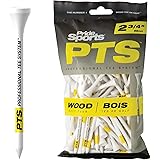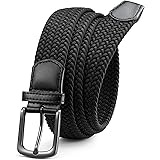Navigating the world of golf equipment can feel like deciphering a cryptic map, especially when you’re just starting your journey. The video above provides a fantastic primer on the various types of golf clubs and what a newcomer truly needs. Building on that insightful overview, this article dives deeper into selecting the optimal golf clubs for beginners, ensuring you build a functional and forgiving set without unnecessary complexity or expense.
The core truth for any aspiring golfer is that you don’t need a full arsenal of 14 clubs to enjoy your first rounds. In fact, a streamlined bag fosters better focus on fundamental swings rather than overwhelming choice. Think of it like learning to drive a stick shift; you master the basic controls before adding in advanced maneuvers. Your initial set should prioritize ease of use and versatility, allowing you to build confidence with every swing.
Understanding the Core Categories of Beginner Golf Clubs
Golf clubs generally fall into three primary families: Woods, Irons, and Putters. Each category serves distinct purposes on the course, much like different tools in a craftsman’s kit. Understanding their basic function is the first step toward building your perfect beginner golf bag.
Woods: Launching Long Shots with Confidence
Traditionally crafted from wood, these clubs now feature advanced metal and carbon heads, engineered for maximum distance. The biggest ‘wood’ in your bag is the driver, designed to launch the ball from the tee box with incredible power. However, as the video highlights, drivers can be notoriously difficult for new players to control.
Consider the driver as a powerful jet engine—it requires precise control to harness its full potential. For beginners, a fairway wood, typically a 3-wood or 5-wood, offers a more forgiving alternative. These clubs have shorter shafts and more loft than a driver, making them easier to strike consistently, whether from the tee or the fairway. Their slightly smaller head reduces the aerodynamic drag and makes solid contact more achievable, giving you confidence without sacrificing too much distance. It’s often wiser to start with a club you can hit well rather than one that promises unhittable power.
Irons: Precision and Versatility for Every Approach
Irons are the workhorses of your golf bag, designed for shots ranging from a few hundred yards to just off the green. These clubs are numbered, and as the number increases, so does the club’s “loft” – the angle of the clubface. A higher loft sends the ball higher and shorter, while a lower loft produces a flatter trajectory and greater distance. This relationship between loft and distance is a fundamental concept in golf.
For instance, a 7-iron provides a balanced combination of distance and control, making it an excellent starting point for learning your iron game. It’s often the benchmark club golfers use to measure their overall swing speed. Beyond the numbered irons, you’ll encounter wedges like the pitching wedge (PW) and sand wedge (SW). The pitching wedge excels at high, short shots into the green, while the sand wedge, with its uniquely shaped sole, is specifically designed to glide through sand, extricating your ball from bunkers with surprising ease. The wide sole, often called “bounce,” helps prevent the club from digging too deep into the sand, making bunker escapes significantly less intimidating.
Putters: The Art of Rolling it In
The putter is arguably the most personal club in your bag, used exclusively on the green to roll the ball into the hole. Unlike other clubs that launch the ball into the air, the putter’s objective is pure roll. Putters come in a bewildering array of shapes and sizes, from classic blades to large, mallet-style designs with intricate alignment aids. The key with a putter, as the video notes, is finding one that simply “feels comfortable.”
This comfort translates into confidence, allowing you to line up your shot and maintain a steady stroke. Some putters offer a heavier feel, aiding stability, while others might prioritize intricate visual cues for alignment. Consider the putter as an extension of your hands; it needs to feel natural and responsive to your touch, helping you visualize the path to the hole. The choice is truly about personal preference and how well a specific design helps you achieve a consistent roll.
Building Your Essential 8-Club Set for Beginners
As the video perfectly illustrates, a complete set of 14 clubs is overkill for beginners. An optimized 8-club set provides all the necessary tools without weighing down your bag or overwhelming your decision-making on the course. This lean approach allows you to develop proficiency with a core group of clubs, rather than spreading your practice thin across too many options.
Your ideal beginner golf club set should include:
- A Fairway Wood (3-wood or 5-wood): This is your go-to for long shots off the tee or from the fairway. Its forgiving nature makes it a more consistent option than a driver for most new players.
- Longer Iron (7-Iron): An excellent club for learning your swing mechanics and gauging distance. It serves as a fantastic mid-range option.
- Mid-Range Irons (8-Iron, 9-Iron): These provide progressive distance control, allowing you to cover various approach shots to the green.
- Pitching Wedge (PW): Essential for those crucial short approach shots and chip shots around the green, offering high loft and precision.
- Sand Wedge (SW): A specialist club for navigating bunkers and useful for tricky short shots from thicker rough. Its design ensures you can get the ball airborne from challenging lies.
- Putter: The ultimate scoring club, vital for rolling the ball into the hole on the green.
This curated selection ensures you have a club for every common scenario you’ll encounter on a golf course, from driving off the tee to putting out. It covers a substantial range of distances and situations, making your golf experience much more enjoyable and less intimidating.
Choosing Beginner-Friendly Golf Clubs: What to Look For
When selecting your first golf clubs for beginners, focus on designs that prioritize forgiveness and ease of launch. Modern golf technology has made incredible strides in creating clubs specifically for those still developing their swing. Avoid the temptation to buy clubs designed for advanced players, as these often exacerbate swing flaws.
Drivers and Fairway Woods: Bigger Heads, More Forgiveness
For drivers, look for a large clubhead. The modern maximum legal head size (460cc) provides a significant “sweet spot,” meaning you don’t have to hit the ball perfectly in the center to get a decent result. Many beginner drivers also incorporate “offset” designs, which subtly help to square the clubface at impact, reducing slices. Some models might feature adjustable weights, but for true beginners, a fixed-weight, ready-to-hit club is often less confusing and more effective.
Irons: Embrace the Cavity Back
The most crucial advice for selecting irons is to choose “cavity back” designs. As demonstrated in the video, these irons have a visible opening or hollowed-out section behind the clubface. This design redistributes weight to the perimeter of the clubhead, increasing the Moment of Inertia (MOI). A higher MOI means the clubface resists twisting on off-center hits, providing a larger, more forgiving hitting area. This is a stark contrast to “blade” irons, which have a solid back and are designed for highly skilled players who consistently hit the center of the face.
Cavity back irons often feature wider soles and thicker top lines, further contributing to their stability and ease of use. They act like a safety net for your swing, ensuring that even imperfect contact yields a playable shot. These attributes make a significant difference in a beginner’s ability to consistently hit the ball airborne and achieve reasonable distance.
Putter: Comfort and Alignment are Key
With putters, personal preference reigns supreme. Beyond comfort, consider how well a putter’s alignment aids help you aim. Many feature prominent lines, dots, or geometric shapes on the top that assist in squaring the face to your target line. Test out different styles—mallets, blades, and mid-mallets—to see which design promotes the most confident and consistent stroke for you. A putter you trust is a putter that saves you strokes on the green.
Furthermore, remember to stock up on golf balls. Losing balls is a rite of passage for every beginner, so always have plenty on hand. Choosing the right golf clubs for beginners is about setting yourself up for success and enjoyment, not necessarily about having the most expensive or advanced equipment. Focus on forgiveness, feel, and functionality to truly ignite your passion for the game.










